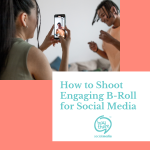One main focus of good parenting is teaching good manners. As parents one of the first lessons we teach is to say please and thank you, and to be polite in our interactions with others. But have you talked with your child about good social media manners? Obviously many of the same rules apply online as those that apply offline; be nice and polite, and don’t make rude comments and post them to your networks! But there are some subtle differences when it comes to social media manners online vs. offline that parents should also make tweens aware of.
These include facial cues, body language, voice and tone. In person we rely on such cues to understand others and get our own point across all the time. But when communicating through social networks this is not the case; especially on those networks where written words are the main form of communication. It is so important that kids are reminded that without these other communication cues words alone can be misunderstood. Your tween may assume their words mean what they meant and may not consider how the words come across to the recipient. Remember, our kids are growing up in an era where digital communication is standard, not the exception. They don’t know life before email, texting, and Facebook and therefore likely don’t have the experience to draw on when it comes to pre-digital communication.
Mannerly participation on social media isn’t just making your opinions heard in a polite & thoughtful way. Another, maybe even more significant, part of social media manners is “thinking before you share/post.” In other words, choosing NOT to jump in when it’s inappropriate, harmful or senseless for you and/or others, but instead choosing to carefully speak when situations grow heated.
So what are some social media rules for our tweens?
First, remind your tween to walk in another’s shoes before posting about that person! This is where the good old golden rule applies- If your child doesn’t know the golden rule, treat others as you wish to be treated, or some version of it, you should spend some time talking about it. When it comes to social media, interacting with others based on this rule is magnified by the sheer numbers and reach of information shared.
Second, use a litmus test before posting, “Would I want someone to say this about ME on Facebook?”
Third, another good idea is to apply the 24 hour rule before you post. Think before you post is a challenge due to the dynamic, spontaneous nature of social media. Tweens need help recognizing that they have a responsibility to think through posting or not posting. You can require your tween follow the 24 hour rule. Wait 24 hours before you post or reply/react to something online if you are angry or emotionally distraught. That may seem like a lifetime to them, but if they develop the ability to pause and think before posting, it can be tremendously beneficial to their long-term online reputation.
You can see how important it is to not only monitor our kids’ social media activity, but to talk with them often and let them know our expectations for their online behavior. Just like we would tell them how we expect them to behave when at a friend’s house, at school, out with a group of peers at a public establishment like the mall or movie theater, we need to set clear expectations for our tweens’ behavior on social networks too.
It is necessary to challenge our kids to think critically about how THEY themselves will be viewed by how they interact on social media. Their behavior is on display a lot longer than the fleeting moment they posted something. This sort of thinking takes practice, but provides a solid framework to interact via social media.
As parents, we teach our tweens to make good choices offline, and good choices online don’t just happen. We have to teach and model that, too.
For more information and a list of our top ten rules of social media manners, check out our new program Saving Face™, designed specifically for parents of tech savvy tweens.






